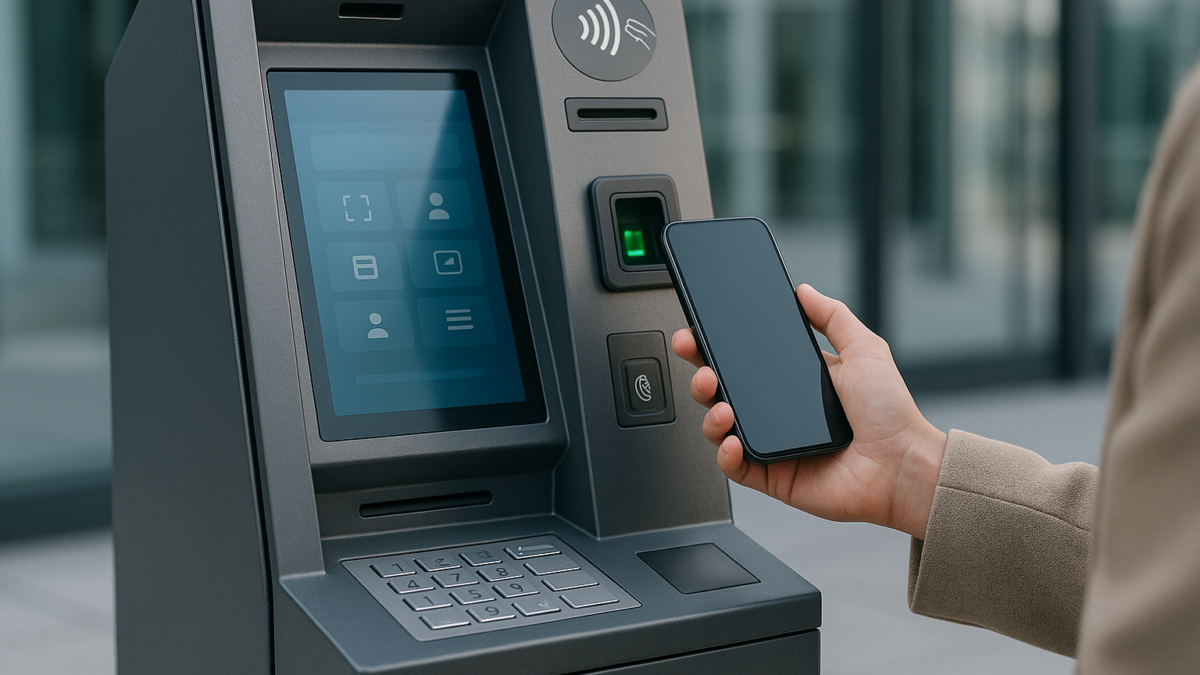The Future of ATM Machines in FinTech: Evolution or Extinction?
Table of Contents
Introduction
ATM machines have long been a cornerstone of traditional banking—reliable, familiar, and available 24/7. But in today’s FinTech-driven economy, where cashless payments, digital wallets, and mobile-first banking are the norm, many are asking: Do ATMs still have a future?
The answer isn’t simple. While cash usage is declining in many parts of the world, ATMs aren’t disappearing—they’re evolving. FinTech innovation is redefining what ATMs can do, how they interact with customers, and the role they play in a hyper-digital world.
A Quick Look Back: What ATMs Were Meant For
Since their debut in the late 1960s, Automated Teller Machines (ATMs) were designed to solve a single problem: how to access cash without visiting a bank branch. For decades, they delivered on this promise with features like:
- Cash withdrawals and deposits
- Balance inquiries
- Mini statements
- Fund transfers within bank accounts
But as mobile apps and digital wallets gained traction, many of these services became redundant, forcing ATMs to reinvent themselves or risk irrelevance.
FinTech’s Impact on ATM Evolution
FinTech is redefining finance through personalization, accessibility, and speed—and ATMs are not immune to this wave.
Here’s how ATM machines are evolving in the FinTech era:
Cardless Withdrawals via Mobile Apps
Many banks now support cardless ATM transactions, allowing users to withdraw cash using:
- QR codes generated from banking apps
- OTPs sent to registered mobile numbers
- NFC-enabled smartphones or wearables
This reduces card theft risk and improves convenience—especially in regions where smartphones outnumber debit cards.
Biometric Authentication
Biometrics are replacing traditional PIN-based access. Modern ATMs in regions like India and the UAE are experimenting with:
- Fingerprint scanning
- Iris recognition
- Facial authentication
This enhances security while also enabling financial inclusion for users without physical cards or even formal IDs.
Smart ATMs with Full Banking Capabilities
ATMs are being upgraded into Smart ATMs or Mini Bank Branches, capable of:
- Accepting utility bill payments
- Providing account opening interfaces
- Offering video calls with customer service agents
- Enabling small loans, insurance, and prepaid recharges
These intelligent kiosks reduce operational costs for banks and improve access in rural or underbanked regions.
You May Also Like: AI in Addiction Treatment: Breaking New Ground in Healthcare
Integration with Digital Wallets & UPI
In many countries, ATMs are now integrated with:
- UPI (Unified Payments Interface) platforms
- Apple Pay, Google Pay, and other mobile wallets
- Crypto wallet interfaces (still experimental in most markets)
This expands their role beyond just physical cash distribution to multi-channel financial access points.
Global Trends Driving ATM Transformation
- Europe: Declining ATM usage is offset by smart kiosk rollouts in banks and transport hubs.
- Asia: Biometric ATMs and cardless features dominate in India, China, and Singapore.
- Africa: FinTech startups are using ATMs for micro-loans and mobile money services.
- North America: Banks are experimenting with AI-enhanced ATMs for fraud prevention and multi-language support.
Security in the Spotlight
With greater functionality comes greater security risk. FinTech integrations bring cybersecurity challenges such as:
- Remote malware attacks
- Phishing on mobile-linked transactions
- Skimming devices and QR code tampering
To address this, next-gen ATMs are adopting end-to-end encryption, real-time fraud detection, and AI-powered threat prevention tools.
Future Use Cases: What’s Next for ATMs?
Here’s what we can expect from ATM machines over the next 5 years:
| Feature | Benefit |
|---|---|
| Crypto ATMs | Exchange and withdraw crypto like BTC/ETH as fiat |
| Voice-enabled ATMs | Accessibility for differently-abled users |
| AI-assisted kiosks | Real-time financial advice and chatbot help |
| Green ATMs | Solar-powered machines for remote deployment |
| Cross-border withdrawal tech | Currency conversion and wallet linking on-the-fly |
Are ATMs Becoming FinTech Channels?
Yes—and that’s the whole point. Instead of fading away, ATMs are becoming decentralized fintech touchpoints, especially in emerging markets. They’re bridging the gap between physical access and digital finance.
In essence, the modern ATM is no longer just a “cash box”—it’s a multi-functional, fintech-enabled node in the broader financial ecosystem.
Final Thoughts: ATM 2.0 Is Just Getting Started
The ATM isn’t dying—it’s being redefined. From biometric security and cashless interactions to full banking services and crypto capabilities, the humble ATM is transforming into a high-tech, FinTech-enabled financial companion.
As long as there is some demand for cash and universal financial access, ATMs will have a purpose—just not in the way we’ve known them before.
Stay Ahead in FinTech
Want more insights on banking tech, financial disruption, and automation trends? Subscribe to iTMunchfor expert-driven blogs and research.





